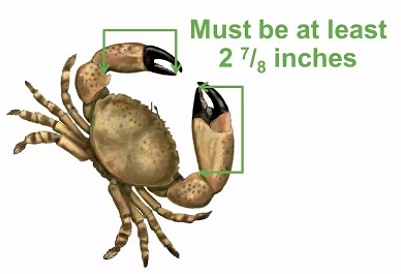“Our added winter moisture and active calling period led to a very long nesting and hatching season, starting in late April and extending into early summer, with chicks hatching as late as early July,” O’Dell said. “From a population standpoint, we are out of a deficit for the first time since 2001-2002. Quail are starting to pop up in places they haven’t been seen in a while.
“If you’ve never had the chance to experience what Arizona quail hunting built its name on, then this would be the year to get out and enjoy it.”
Meanwhile, hunters should note that the season for Mearns’ quail doesn’t begin until Dec. 4. It’s summer rainfall that plays a key role in nesting success and population numbers of this species. After a spotty and relatively weak monsoon across southern Arizona, these birds are likely to be abundant only in pockets that received sufficient precipitation this summer.
A valid Arizona hunting or combination hunt and fish license is required for all hunters 10 and older. Those hunters under 10 must either have a valid hunting or combination hunt and fish license, or be accompanied by an adult who possesses a valid hunting or combination hunt and fish license. Licenses can be purchased online or at license dealers statewide. A youth combination hunt and fish license (ages 10 to 17) is $5.
The general bag limit is 15 quail per day in the aggregate, of which no more than eight may be Mearns’ quail (when the Mearns’ season opens Dec. 4). The general possession limit is 45 quail in the aggregate after opening day, of which no more than 15 Gambel’s, scaled or California quail in the aggregate may be taken in any one day. After the opening of the Mearns’ season, the 45-quail possession limit may include 24 Mearns’ quail, of which no more than eight may be taken in any one day.
More quail-hunting information can be found on the department’s website at https://www.azgfd.com/Hunting/. Another resource for both new and experienced hunters alike is “An Introduction to Hunting Arizona’s Small Game.” Written by Randall D. Babb, the 196-page, full-color book covers where and how to hunt small game birds (like quail), squirrels, rabbits, ducks and geese. It also includes how to prepare and cook your harvest, with illustrations and recipes. The book can be ordered for $16.95 at www.azgfd.gov/publications.
Finally, hunters should check out O’Dell’s techniques for field-dressing quail at https://www.youtube.com/watch?v=3gRwZAcWzzk.
####
Publishers Notes: OUT OF STATE HUNTERS, FISHERMEN & OUTDOOR ENTHUSIASTS; Due to the Covid 19 pandemic, there could be limitations for OUT of STATE hunters, fishermen and other outdoor enthusiasts to include a 14-day quarantine requirement or negative COVID-19 testing alternative. Please check with the State's Department of Natural Resources BEFORE you travel or apply for the 2020 Fall Hunts.
Disclaimer: The views expressed on this site are that of the authors and not necessarily that of TBC Press
Florida 2021 Stone Crab Season Opens Oct 15
Submitted by: TBC Press
Posted on: 10/04/21
The Backcountry Press
The country's premier daily HUNTING, FISHING & OUTDOOR news in the USA and around the globe. Read whats happening in your neck of the woods & beyond.
© 2020 TBC Press - All Rights Reserved Website Design by:
News # 14560
The Florida 2021 recreational and commercial stone crab harvest seasons start Oct. 15 and remain open through May 1, closing May 2, 2022.
The minimum claw size limit is 2 7/8 inches.
As a reminder, all plastic and wood stone crab traps will need to be outfitted with a 2 3/16-inch escape ring before the 2023/2024 season.
Recreational Trap Registration
Recreational harvesters who are age 16 and older and fish with traps are required to complete an online, no-cost recreational stone crab trap registration each year. To register, visit GoOutdoorsFlorida.com, sign in, click the “Click here to get a License!” tile, scroll down to the “Saltwater Fishing” section, and select “Recreational Stone Crab Trap Registration.”
Upon completion, each person will receive unique trap registration numbers that must be included on each trap along with the owner’s full name and address. This information must be legible and must be permanently attached to each trap.
Other tips and regulations
Care should be taken when removing the claws so as to not permanently injure the crab.
Claws may not be taken from egg-bearing stone crabs. Stone crabs may not be harvested with any device that can puncture, crush or injure a crab’s body. Examples of devices that can cause this kind of damage include spears and hooks.
Recreational harvesters may take a daily bag limit of 1 gallon of claws per person or 2 gallons per vessel, whichever is less, and may use up to five stone crab traps per person.
Recreational and commercial traps may be baited and placed in the water Oct. 5 but traps may not be pulled and claws may not be harvested or possessed until Oct. 15. Traps that are not being fished should be removed from the water to avoid ghost fishing, a process in which marine species get caught in the trap for extended periods of time and are not harvested.
Stone crab regulations are the same in state and federal waters.
For more information on harvesting stone crabs for recreation, trap specifications, commercial stone crab regulations and licensing information, go online to MyFWC.com/Marine.
Keep up-to-date with saltwater and freshwater fishing regulations on your phone by downloading the Fish Rules app in the App Store or Google Play. Learn more at FishRulesApp.com.
####













